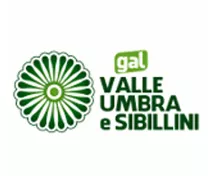General information
RDP Priority
- P6. Social inclusion and local development
RDP Focus Area
- 6B: Local development
RDP Measure
- M19: LEADER/CLLD
Beneficiary type
- Local Action Group
Summary
A LAG operating in an interior part of central Italy (Umbria) focused on supporting its communities and businesses that were severely affected by the 2016 earthquake. The aim was to promote the recovery of the tourism sector in a unified way through the organisation of numerous events in the area, centred on food specialties and sports. Small and micro businesses were particularly encouraged to participate in the events. Further activities involved a number of promotional campaigns using innovative technologies (including social media) and networking initiatives to increase the collaboration between municipalities, public bodies, and private companies. In addition, new types of meetings between "supply and demand" in the tourism sector were facilitated.
Results
- Over a period of five years, the “Umbria promotes renaissance” project promoted and invested in 42 major events, initiatives, and campaigns (a final one centred on tourism promotion in Italian airports is planned for Summer 2024).
- The project was successful in creating and sustaining networks among local economic actors and stakeholders as part of the supported initiatives.
Ressources
Documents
Context
In late August 2016, a severe earthquake hit central Italy, affecting Umbria and three other regions. The area most affected was the mountainous high-altitude settlements that were already suffering from abandonment (between 2021 and 2011 the population dropped by 10%). The LAG Valle Umbra and Sibillini included 11 municipalities that were granted emergency status. The LAG therefore needed to act quickly and focus on developing a recovery strategy for the territory, in particular from a social aspect. It was important that the area’s identity, as well as its main attractions, were promoted. The LAG considered this process to be a true “renaissance”.
Objectives
The main objectives of the project were to gather relevant and available human resources to jointly develop a renaissance strategy and to create the conditions for sustainable and integrated development. The key was to identify and valorise local products and traditions to attract tourists, and to support the municipalities in using the additional funds provided by the regional authority. Overall, the project sought to reinforce existing economic activities to prevent further abandonment of both land and settlements.
Activities
Project activities included:
- Providing support to municipalities to design and organise events (e.g, food fairs) promoting a set of local food specialities (e.g., Valnerina truffle, Trebbiano Spoletino wine, Norcia ham, traditional cheese, legumes, saffron, extra-virgin olive oil, sweets). Similar support was also provided to design and promote events focusing on “slow tourism” activities such as trekking and cycling in the earthquake-affected area on old and new trails (including an abandoned railway line between Spoleto and Norcia).
- Organising events: one of the events included the organisation of a new exhibition focusing on XIV-century paintings by local artists, which was accompanied by a special catalogue.
- Fostering the involvement of local economic actors and other stakeholders in collaborating on the supported activities was a key ongoing task of the project.
- Providing support and encouraging participation in local and national tourism fairs (Salone del Gusto, Vinitaly, TTG), local craft fairs and national fairs (Artigianato in Fiera).
Main results
The project achieved the following results:
- Over a period of five years, the “Umbria promotes renaissance” project promoted and invested in 42 major events, initiatives, and campaigns (a final one centred on tourism promotion in Italian airports is planned for Summer 2024).
- Approximately 49 000 residents benefited from the project.
- The project was successful in creating and sustaining networks among local economic actors and stakeholders as part of the supported initiatives.
Key lessons
- The project was successful in slowing down the abandonment process that was ongoing in the area, particularly after the earthquake.
- The area was in need of coordination for regeneration activities, and the project managed to offer visibility to small operators that would otherwise have been neglected and probably closed down.
Perhaps we might have devoted more efforts to creating a stronger, common brand for the area, to make every marketing initiative more attractive; this is something that we will try to achieve in the near future; this would have also eased our communication with stakeholders.

